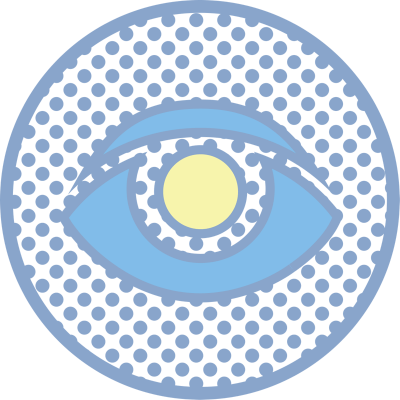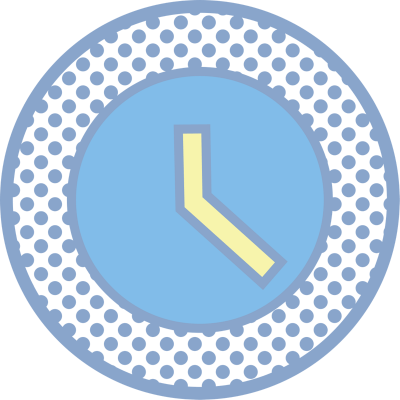- मुख्यपृष्ठ
- रोग
- मायोपिया
Myopia Treatment: Effective Ways to Correct Nearsightedness
Myopia, commonly known as nearsightedness, is a vision condition where distant objects appear blurry while close objects remain clear. This condition occurs when the eye’s shape causes light to focus in front of the retina rather than directly on it. With the increasing use of digital screens and lifestyle changes, myopia has become a prevalent vision problem worldwide. Fortunately, various myopia treatments are available to correct vision and prevent further deterioration.
In this comprehensive guide, we will discuss the types of myopia, effective myopia correction lenses, eye exercises for myopia, and both non-surgical and surgical approaches for the correction of myopia.

Understanding Myopia: What Causes It?
Myopia is primarily caused by the elongation of the eyeball, which alters how light enters and focuses on the retina. Several factors contribute to its development, including:
-
अनुवांशिकता:
If one or both parents have myopia, there is a higher likelihood of developing it.
-
Prolonged Near Work:
Excessive screen time, reading, or close-up work can increase the risk of myopia progression.
-
Lack of Outdoor Activities:
Studies suggest that children who spend less time outdoors are more prone to developing myopia.
-
Poor Lighting Conditions:
Insufficient lighting while reading or working on screens can strain the eyes and contribute to myopia.
Types of Myopia
There are different classifications of myopia based on severity and progression:
1. Simple Myopia
- The most common type of myopia.
- Typically develops during childhood and stabilizes in early adulthood.
2. High Myopia
- A more severe form where the prescription exceeds -6.00 diopters.
- Increases the risk of retinal detachment, glaucoma, and macular degeneration.
3. Progressive Myopia
- Myopia that continues worsening beyond childhood.
- Requires regular monitoring and early intervention to prevent complications.
4. Pathological Myopia
- A rare but serious type of myopia.
- Associated with degenerative changes in the retina and choroid.
Myopia Correction Lenses
One of the most common methods for correction of myopia is the use of corrective lenses. The options include:
1. Eyeglasses for Myopia
- Single Vision Lenses: Used to correct distance vision.
- Bifocal or Progressive Lenses: Recommended for individuals with presbyopia and myopia.
2. Contact Lenses for Myopia Correction
- Soft Contact Lenses: Provide clear vision and comfort for daily wear.
- Rigid Gas Permeable (RGP) Lenses: Offer sharper vision but require an adjustment period.
- Orthokeratology (Ortho-K) Lenses: Special overnight lenses that reshape the cornea temporarily.
Choosing the right myopia correction lens depends on the patient’s lifestyle, comfort, and vision requirements.
Treatment Options for Myopia (Nearsightedness)
There are several treatment options च्या साठी myopia (nearsightedness) that help improve vision clarity and reduce dependency on corrective lenses. These options include non-surgical treatments such as corrective lenses and specialized eye exercises, as well as surgical interventions for those seeking a more permanent solution.
Non-Surgical Treatment Options for Myopia
1. Prescription Eyeglasses
Eyeglasses are the most common and non-invasive solution for myopia. They correct refractive errors by adjusting how light focuses on the retina. There are different types of lenses used for myopia correction, including:
- Single Vision Lenses – Corrects distance vision.
- Bifocal or Progressive Lenses – Suitable for individuals who need both near and distance vision correction.
2. Contact Lenses
For those who prefer an alternative to glasses, contact lenses provide effective myopia correction by sitting directly on the eye’s surface. Types of contact lenses for myopia include:
- Soft Contact Lenses – Comfortable and widely used.
- Rigid Gas Permeable (RGP) Lenses – Provide sharper vision and are ideal for high myopia.
- Orthokeratology (Ortho-K) Lenses – Special overnight lenses that reshape the cornea temporarily to provide clear daytime vision.
3. Atropine Eye Drops
Low-dose atropine eye drops have been shown to slow the progression of progressive myopia in children. These drops help reduce eye elongation, a major cause of worsening myopia.
4. Myopia Control Glasses or Contact Lenses
Specialized myopia control lenses help slow down myopia progression, especially in children.
5. Eye Exercises for Myopia
Although eye exercises cannot reverse myopia, they help in reducing eye strain and improving focus flexibility. Some common exercises include:
- Blinking exercises to prevent dry eyes from excessive screen time.
- Focus shifting between near and distant objects.
- Palming technique to relax eye muscles.
Surgical Options for Myopia Correction
For those looking for long-term solutions, surgical interventions are available to correct myopia permanently. These procedures reshape the cornea to improve how light focuses on the retina.
1. LASIK (Laser-Assisted in Situ Keratomileusis)
LASIK is the most popular laser eye surgery for myopia correction. It involves reshaping the cornea to allow light to focus directly on the retina, leading to clearer vision.
- साधक: Quick recovery, minimal discomfort, effective for moderate myopia.
- बाधक: Not suitable for individuals with very thin corneas or severe myopia.
2. PRK (Photorefractive Keratectomy)
PRK is an alternative to LASIK for those with thin corneas. Instead of creating a corneal flap, the outermost layer of the cornea is removed, and laser treatment is applied to reshape the cornea.
- साधक: Effective for those unsuitable for LASIK.
- बाधक: Longer recovery time compared to LASIK.
3. SMILE (Small Incision Lenticule Extraction)
SMILE surgery is a minimally invasive laser procedure where a small disc of corneal tissue is removed through a keyhole incision to correct myopia.
- साधक: Faster recovery and less dry eye than LASIK.
- बाधक: Limited suitability for very high myopia.
4. Implantable Collamer Lenses (ICL)
ICL surgery involves implanting a corrective lens inside the eye to treat high myopia. Unlike LASIK, no corneal tissue is removed.
- साधक: Reversible and suitable for extreme myopia.
- बाधक: Involves a slightly higher risk than LASIK.
5. Refractive Lens Exchange (RLE)
This procedure is similar to cataract surgery, where the natural eye lens is replaced with an artificial intraocular lens (IOL) to correct myopia.
- साधक: Ideal for older individuals with high myopia.
- बाधक: Not recommended for younger patients.
Which Myopia Treatment is Best for You?
The best मायोपिया उपचार depends on factors such as:
- Severity of myopia
- Age and eye health
- Lifestyle preferences
- Medical history
When to Consider Surgical Treatment?
- If you do not want to rely on glasses or contact lenses.
- If your myopia is stable (not progressing).
- If you have no underlying eye conditions like glaucoma.
Before choosing any treatment, consulting with an ophthalmologist or eye specialist is crucial to determine the best approach for your vision correction.
Interesting Facts About Myopia
- Myopia affects approximately 30% of the global population, and the number is expected to rise due to increased screen time.
- Spending two or more hours outdoors daily can reduce myopia progression in children.
- The first eyeglasses for myopia were invented in the late 13th century.
- Severe myopia can increase the risk of retinal detachment, which may require emergency surgery.
Frequently Asked Questions (FAQs) about Myopia
Can Myopia Be Reversed Naturally?
Currently, there is no scientifically proven way to reverse myopia naturally. However, eye exercises for myopia, lifestyle modifications, and proper eye care can slow progression.
What is the Best Myopia Correction Lens?
The best lens depends on individual needs. Glasses, contact lenses, and Ortho-K lenses are popular choices for different lifestyles.
Does Wearing Glasses Worsen Myopia?
No, wearing glasses does not worsen myopia. It is a myth. Proper prescription lenses provide clear vision and prevent unnecessary eye stra
Can LASIK Completely Cure Myopia?
LASIK can effectively correct myopia, but results vary. Some patients may still need low-prescription glasses for night driving or reading as they age.
Are There Any Side Effects of Myopia Surgery?
Temporary side effects like dry eyes, glare, and halos are common after CSR eye surgery but usually resolve over time.
Myopia is a widespread vision issue, but with advancements in myopia treatment, individuals have several options to correct and manage their vision effectively. Whether you opt for myopia correction lenses, eye exercises for myopia, or consider CSR laser treatment, early intervention is key to preventing severe vision impairment.
If you or a loved one is experiencing myopia symptoms, consult an eye specialist to determine the best approach for correction of myopia and maintain long-term eye heal

डोळ्यांच्या त्रासाकडे दुर्लक्ष करू नका!
आता तुम्ही ऑनलाइन व्हिडिओ सल्लामसलत किंवा हॉस्पिटल अपॉइंटमेंट बुक करून आमच्या वरिष्ठ डॉक्टरांपर्यंत पोहोचू शकता
आता अपॉइंटमेंट बुक करा